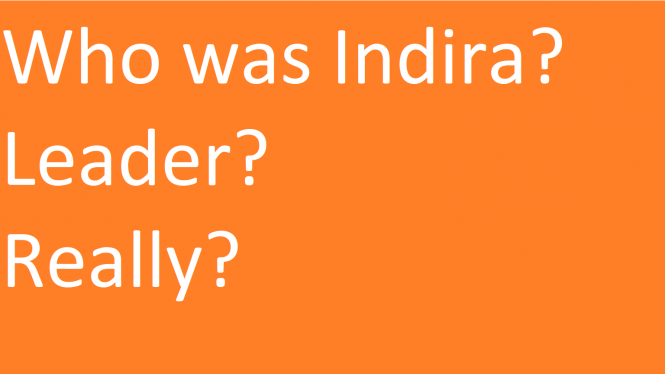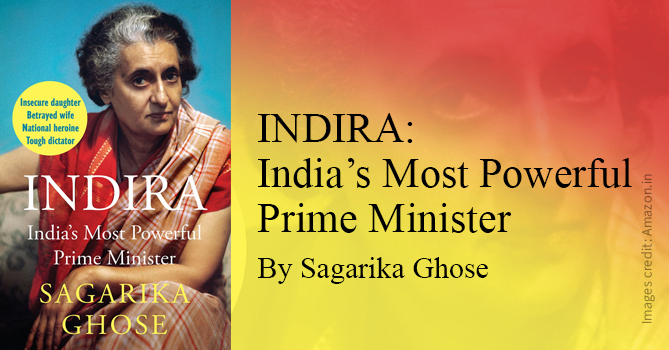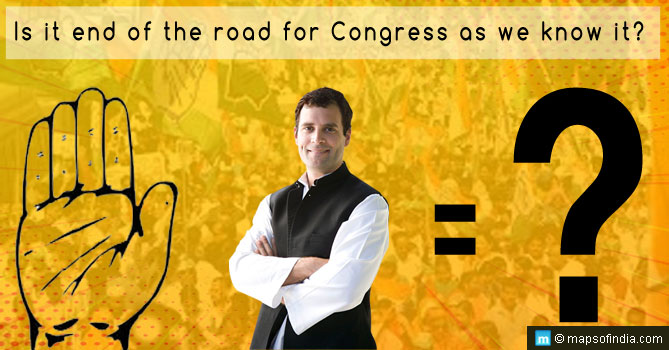
A few days ago news reports across the country triumphantly announced that the Indian Prime Minister, who was on an official visit to the United States, was the first (PM of our country) to dine in the White House. This show of cordiality and strengthening ties between the world’s largest democracy (India, of course) and the world’s oldest democracy (let’s ignore the debate surrounding that claim for the moment) brought a great deal of joy and anticipation to the people of both nations.
Within a week of this momentous event came a book launch by one of India’s well-known journalists. About Indira Priyadarshini Gandhi – the third Prime Minister of India and the only female to have held the office till date. Indira held the PM’s office for four terms becoming the second longest serving PM after her father. The time she held office, however, was also the darkest in the history of independent India. When our news reports called us the world’s largest democracy, they quite overlooked the time when we were a tyranny in the guise of a democracy.
Very often, politically motivated groups and entities have referred to Indira Gandhi as the most powerful PM this country has had. It may well be true that Indira wielded a great deal of power – far too much to be good for a fledgling democracy – but how indeed was this power used? That is a question that warrants our immediate attention.
Dynastic Politics in a Democracy
Let us look at Indira’s entry into politics, to start with. Motilal Nehru, her grandfather served as the President of the Indian National Congress – both in 1919 (Amritsar) and in 1928 (Calcutta). His son Jawaharlal Nehru was groomed to inherit his political mantle, much like Jawaharlal himself groomed Indira and later Indira picked up a rather reticent Rajiv (who was an Air India pilot by profession and distant from the political scenario) to carry on her legacy. The ‘illustrious’ that now Rahul and Priyanka are boastful of. Politically ambitious Jawaharlal Nehru was neither as competent nor quite as fierce as Sardar Vallabh Bhai Patel but was perhaps a lot more charming, suave, and capable of influencing the Mahatma himself. It is not a surprise that after serving a long term Nehru decided to influence the rise of Indira and pass down a nascent ‘democracy’ to his daughter. It took Indians a very long time to remember that dynastic politics do not quite go with the ideals of democracy. This time, the “first family of Indian politics” spent in institutionalizing corruption, muddying the political environment by splitting and dividing Indians along communal lines, and growing its personal coffers at the expense of the tax payers of India.
Indira Gandhi in Office – The Real Picture
Coming back to Indira, let us look at the legacy her era of dominance left India with.
- Education was one of the greatest challenges India was facing when Indira first took over as PM. Literacy rates were as low as 28.3 percent. By the time she had completed 3 terms in 1977 literacy was still well below 43 percent. Women’s education, adult literacy, higher education in the country remained completely unaddressed.
- It is true that financial reforms were instituted during the Indira Gandhi era. The nationalization of banks was undertaken in 1969 but the safeguards necessary to keep corruption and bureaucracy of these institutions were not put in place. Many of those placed on the boards of these banks were Congress loyalists, perhaps to ensure financial control and comfort for the party and its leaders. Indian economy under Indira staggered and heaved even as smaller but better administered countries like Singapore zoomed ahead. It is due to these “lost years” that India still remains a developing economy.
- The Cold War era was perhaps the perfect time for India to have taken on the leadership of countries which chose to remain neutral – the Third World countries. In matters of international diplomacy too, the Indira Gandhi government failed India miserably. By pretending to remain neutral but by banking on Big Brother Russia for everything – from cultural exchanges to fighter planes – Indira effectively isolated India from the advantages of building concrete trade ties with the US and other European nations. When President Nixon referred to Indira as “the old witch”, we smouldered in humiliation but what really did the government do to solidify India’s pride and position in the world?
- One of the darkest legacies of Indira’s leadership is the continued strain in India’s relationship with two important neighbours. The Kashmir issue is one that should have been sorted out for times to come by the Indira Gandhi led government. The 1965 war was widely accepted as a tacit defeat for Pakistan (despite the inconclusive verdict). It was the right time to bring Pakistan to the negotiation table. If not then, following the decisive victory in 1971, Indira should have reclaimed PoK for India. At best, a mutually acceptable solution could have been reached. Each opportunity to consolidate was missed – a colossal and costly failure on her part.
- The constant conflict with China too is a matter that should have been sorted in its early years. Even as China moved in to annex Tibet – the buffer land between India and China – Indira missed the opportunity to similarly annex Nepal. Or at least to consolidate the boundary and the land that we claim is ours. Arunachal Pradesh is still claimed by China; all’s not calm on the eastern front.
- Call it a time of domestic consolidation if you will, but here we face the greatest acts of political cunning – separatism. The “divide and rule” policy of the British was inherited by Indira. Instead of harnessing the post-independence high to consolidate the nationalism in the country, she further divided us, the Indians. Hindu-Muslim relations were on an ebb post partition and the Congress Party, under Indira, made great use of the mutual distrust to gain a vote bank. No part of the country was spared of her political duplicity.
- Operation Bluestar – the attack on Harmandir Sahib Complex in Amritsar – still remains one of the sorest incidents in the history of Indian Punjab. What is not well known, though, is the fact that Jarnail Singh Bhindranwale, the leader of the armed “militants” who were neutralized during the operation, had been associated with Indira herself for years. Why then could the PM not peacefully diffuse the situation before passing such ruthless orders? Why were thousands of innocents Sikhs across the state targeted and hundreds killed immediately after this attack?
- Punjab was not the only mismanaged state under Indira Gandhi. Assam was a Congress stronghold before it recently fell to the BJP. But the memories of the Nellie massacre (and government apathy) which claimed the lives of over 2000 people remain a festering wound. The riots in Maharashtra, the neglect of the north eastern states, the isolation of the southern states – these are all on Indira’s head.
- The worst and the most shameful episodes during Indira Gandhi’s tenure at the PMO is the declaration of Emergency. Indira-led Congress had registered huge victories in the state assembly elections of 1972. The Socialist party alleged that she had violated several electoral rules and the Allahabad High Court ruled against her. When the Supreme Court too did not seem inclined to acquitting her, Indira Gandhi feared losing her seat of power and immediately prompted the President to declare a State of Emergency. Personal freedoms and the freedom of the press were revoked, unsettling ordinances passed without due legislation and debate, forced mass sterilization campaigns were undertaken, and censorship was the order of the day. Political opponents including the likes of Morarji Desai, Jivantram Kripalani, Charan Singh, Atal Bihari Vajpayee, and even the queen of Jaipur Gayatri Devi were arrested and incarcerated. Lawlessness reigned supreme. Let us merely say that the 21-month period from 1975 to 1977 plunged India into one of its darkest eras and “elevated” Indira from a democratically elected leader to a ruthless tyrant.
Let me return to the present once again, let me ask the esteemed intellectuals of my country, the great thinkers and journalists who seem to have taken a fancy to Indira’s “power”, if she was indeed a great leader? I ask those who compare her to the Rani of Jhansi by describing her as “a knight astride a charging warhorse”, should Indira Gandhi be called the most powerful PM? Power is, after all, as power does. And a tyrant, no matter how powerful, has no place in a democracy such as ours.





